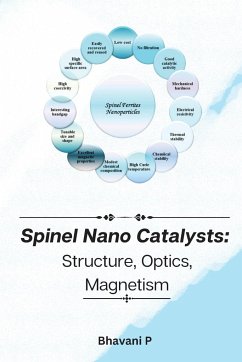Spinel nano catalysts are a type of nanomaterials that have gained significant attention in recent years due to their unique properties and potential applications in various fields such as catalysis, energy, and electronics. Spinel nano catalysts are composed of metal oxide nanoparticles that have a spinel crystal structure, which is characterized by a face-centered cubic (fcc) arrangement of metal ions. The spinel crystal structure is composed of two types of metal ions, one occupying the tetrahedral sites (A sites) and the other occupying the octahedral sites (B sites) in the crystal lattice. The general formula for the spinel structure is AB2O4, where A and B are metal ions and O is oxygen. The most common spinel structure is that of magnesium aluminate (MgAl2O4), where Mg2+ and Al3+ ions occupy the A and B sites, respectively. The size of spinel nano catalysts can range from a few nanometers to a few hundred nanometers. The small size of these nanoparticles gives rise to unique properties that are not observed in bulk materials. One of the most important properties of spinel nano catalysts is their optical properties. The absorption and emission of light by spinel nano catalysts depend on their size, shape, and composition. These properties make spinel nano catalysts attractive for applications such as photocatalysis, light-emitting diodes, and solar cells. In addition to their optical properties, spinel nano catalysts also exhibit interesting magnetic properties. The magnetic behavior of spinel nano catalysts is dependent on the type of metal ions present in the crystal lattice and their oxidation state. Spinels containing transition metal ions such as iron, cobalt, and nickel are often ferromagnetic or ferrimagnetic at room temperature. The magnetic properties of spinel nano catalysts make them promising candidates for magnetic data storage and biomedical applications. The catalytic activity of spinel nano catalysts is also of great interest. The unique structure of spinel nano catalysts provides a large surface area for reactions to occur, and the presence of metal ions with different oxidation states can facilitate redox reactions. Spinel nano catalysts have been found to be effective in a variety of catalytic reactions, including oxidation, hydrogenation, and carbon-carbon bond formation. In conclusion, spinel nano catalysts are a promising class of nanomaterials with unique properties that make them attractive for various applications. Their spinel crystal structure, optical properties, magnetism, and catalytic activity have been extensively studied, and their potential for applications in catalysis, energy, and electronics is rapidly expanding. Further research in this field is necessary to fully understand the properties and potential applications of spinel nano catalysts.








